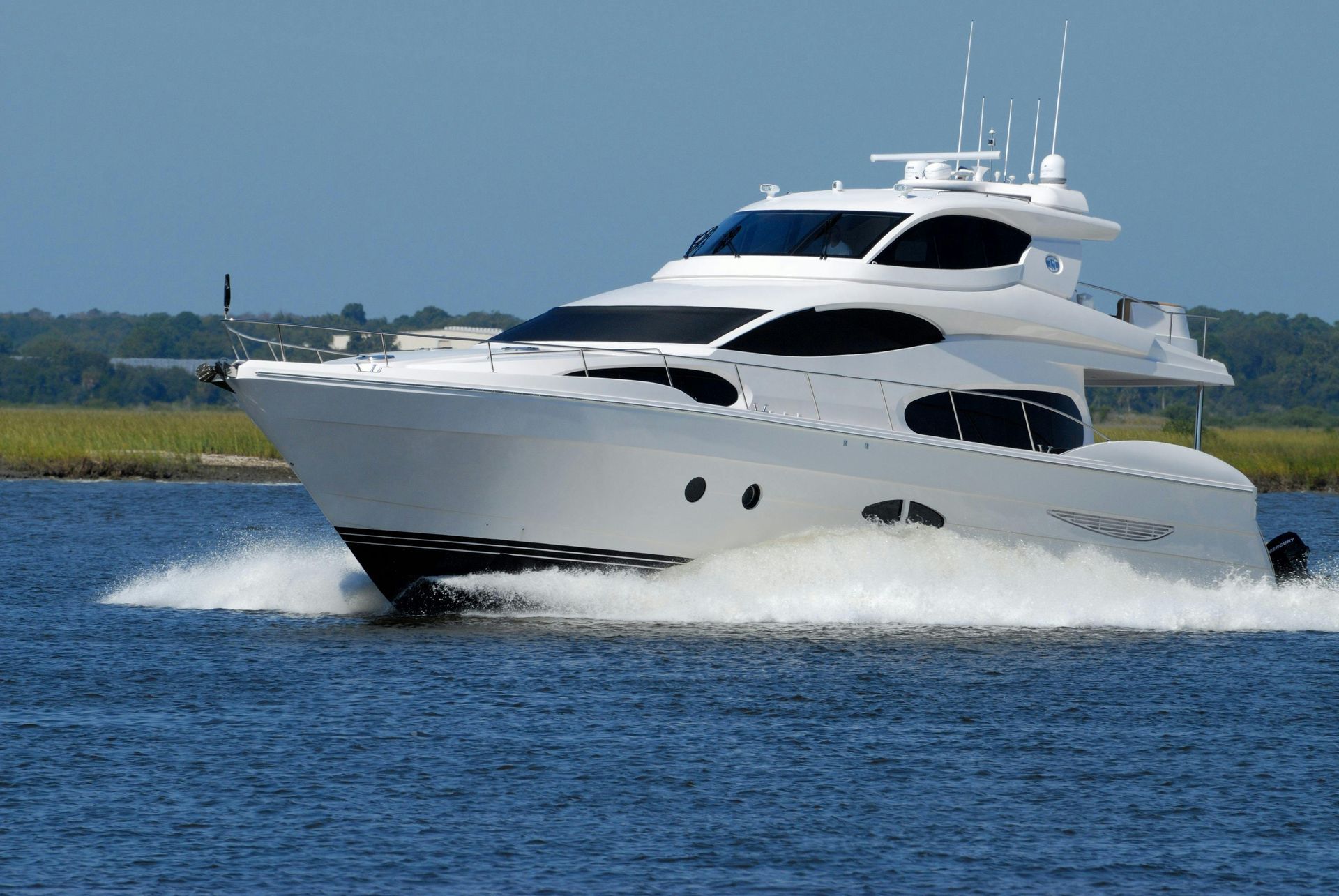
6 Tasks to Complete During a Yacht's Annual Maintenance
Owning a yacht comes with a unique set of responsibilities, and one of the most crucial is ensuring that regular maintenance is carried out. Annual maintenance not only enhances the longevity of your vessel but also ensures safe and enjoyable experiences on the water. This article outlines six essential tasks that should be completed during a yacht's annual maintenance, emphasizing their importance and providing actionable insights.
Understanding the Importance of Annual Yacht Maintenance
Annual yacht maintenance is fundamental to preserving the integrity and performance of your vessel. Much like a car, a yacht faces wear and tear from constant exposure to harsh marine environments. Therefore, maintaining your yacht ensures it stays in optimal condition, minimizing expensive repair costs down the line.
Every year, specific tasks should be completed to check the overall health of the yacht. These range from the mechanical systems to the cosmetic aspects. Attention to these details not only protects your investment but also maximizes your boating enjoyment by preventing unexpected breakdowns or malfunctions. Regular cleaning and polishing of the hull, for instance, not only enhance the yacht's aesthetic appeal but also protect it from the corrosive effects of saltwater, which can lead to long-term damage if left unaddressed.
The Role of Regular Maintenance in Yacht Longevity
Regular maintenance plays a crucial role in the longevity of a yacht. By conducting thorough inspections and addressing minor issues before they escalate, yacht owners can significantly extend the life of their vessels. A well-maintained yacht also preserves its value, making it easier to sell or upgrade in the future. Additionally, keeping a detailed maintenance log can be beneficial when it comes time to sell, as prospective buyers often look for evidence of diligent upkeep.
Moreover, systematic maintenance allows for a deeper understanding of the yacht’s systems and performance characteristics. This knowledge can improve a captain's ability to respond to issues promptly, ensuring smooth sailing throughout the season. For example, understanding the nuances of the yacht's electrical systems can help in troubleshooting problems that may arise, thus enhancing the overall boating experience and ensuring that the vessel performs at its best in various conditions.
Safety Implications of Neglected Yacht Maintenance
Neglecting yacht maintenance can lead to serious safety hazards. A failure in the engine, electrical system, or even the hull can result in catastrophic accidents at sea. Regular checks help to identify potential problems before they pose a risk to safety. For instance, weak hull integrity can lead to flooding, while an unserviced engine might fail during critical moments. Furthermore, ensuring that life-saving equipment, such as life jackets and flares, are in good condition and easily accessible can make all the difference in an emergency situation.
Safety is paramount in boating, and it is the owner’s responsibility to ensure that safety features and equipment are functioning correctly. Regular maintenance contributes to not only the yacht’s performance but also the safety and wellbeing of all onboard. Additionally, it’s wise to consider the environmental impact of your yacht’s operations; maintaining the engine and fuel systems can reduce emissions and help protect marine ecosystems. By prioritizing maintenance, yacht owners not only safeguard their vessels but also contribute to the preservation of the beautiful waters they navigate.
Task 1: Inspecting and Cleaning the Hull
The hull is one of the most critical components of a yacht. It protects internal systems and is relied upon to keep the vessel afloat. Thus, a thorough inspection and cleaning of the hull should be a primary task during annual maintenance.

Identifying Potential Hull Damage
When inspecting the hull, look for signs of wear, such as cracks, blisters, or discoloration. Pay special attention to areas below the waterline, as they are more susceptible to damage from water pressure, marine growth, and corrosion.
Common issues may include osmosis, which can cause blisters on the fiberglass, and any signs of delamination. If significant damage is identified, consulting with professionals for repairs is advisable. Regular inspections help mitigate long-term damage and maintain the yacht's structural integrity.
In addition to visual inspections, utilizing tools such as moisture meters can provide a more in-depth analysis of the hull's condition. These devices can help detect hidden moisture that may not be visible to the naked eye, offering insights into potential osmosis or water intrusion issues. Furthermore, inspecting the keel and rudder areas is essential, as these components are often subjected to the most stress and can develop issues that compromise the yacht's performance.
Effective Cleaning Techniques for Yacht Hulls
Cleansing the hull involves both aesthetic and functional elements. A dirty hull can affect the yacht’s speed and fuel efficiency due to increased drag.
Utilizing environmentally friendly cleaning agents is recommended to avoid polluting the marine ecosystem. Consider using a soft brush and biodegradable soap to scrub the hull gently. For tougher stains, such as those caused by barnacles, deploying a specialized hull cleaner can be effective.
Moreover, after cleaning, applying a protective wax or sealant can enhance the hull's shine and provide a barrier against future grime and marine growth. Regular waxing not only preserves the aesthetic appeal of the yacht but also adds a layer of protection against UV damage and saltwater corrosion. Additionally, it is wise to schedule a professional polishing service annually, as this can rejuvenate the gel coat and ensure that the hull remains in optimal condition for years to come.
Task 2: Checking the Engine and Propulsion System
The engine and propulsion systems are crucial for any yacht’s operation. Comprehensive checks are necessary to ensure everything is functioning optimally. Regular service, including oil changes and filter replacements, can keep the engine in top condition. Neglecting these vital components can lead to unexpected breakdowns, which can be not only inconvenient but also potentially dangerous while out at sea.
Key Components of the Yacht Engine to Inspect
Begin by checking the oil levels and condition; if the oil appears dark or contains particles, it should be changed. Inspect belts and hoses for cracks or wear. Additionally, ensure that the fuel system is clear of obstructions and that filters are clean. It’s also advisable to monitor the battery condition, as a well-functioning battery is essential for starting the engine and powering onboard electronics. Regularly testing the battery voltage and cleaning the terminals can prevent starting issues and extend battery life.
Examine the cooling system, which is vital for preventing overheating. Check the coolant levels and inspect for leaks. A well-maintained engine translates to reliable performance and peace of mind on the water. Furthermore, consider flushing the cooling system periodically to remove any sediment or corrosion that may have built up over time, ensuring optimal heat exchange and preventing engine damage.
Maintaining the Propulsion System for Optimal Performance
The propulsion system includes the shaft, propeller, and drives. Regularly inspect these components for any signs of damage or corrosion. Securely fasten all bolts and fittings, as vibrations during operation can lead to loosening over time. It’s also important to check the alignment of the shaft, as misalignment can cause excessive wear and tear on the bearings and seals, leading to costly repairs.
Consider cleaning the propeller to ensure maximum efficiency. A damaged or dirty propeller can result in reduced speed and increased fuel consumption, negatively impacting your journey. Additionally, inspect the anodes attached to the propeller and shaft, as these protect against galvanic corrosion. Replacing worn anodes can save you from more extensive repairs down the line and ensure that your yacht remains in peak condition for all your adventures on the water.
Task 3: Examining the Electrical System
A well-functioning electrical system is essential for navigating, communication, and comfort onboard. An annual examination helps prevent unexpected failures while at sea.
Regular Checks for the Yacht's Electrical System
Start by checking battery connections and terminals for corrosion. Ensure that batteries are charged and functioning properly. Inspect the wiring for any signs of wear, fraying, or loose connections.
Pay special attention to fuses and breakers, as these are critical for safety. If a fuse keeps blowing, it may indicate a deeper issue that needs addressing. Consider utilizing a multimeter for precise measurements of voltage and current.
Troubleshooting Common Electrical Issues
Some common electrical problems include faulty wiring, malfunctioning navigation lights, and battery failures. Always keep a basic toolkit onboard, including fuses, connectors, and wire. Regular electrical checks and prompt troubleshooting can save time and ensure safety while operating the yacht.
Task 4: Assessing the Plumbing and Water Systems
Onboard plumbing is vital for maintaining comfort and hygiene. Therefore, assessing the plumbing and water systems should be a priority during annual maintenance.
Ensuring the Efficiency of Onboard Plumbing
Start by checking all hoses and fittings for leaks. Ensure that water pumps are functioning properly and that there are no blockages in the system. Regularly clean the water filters and inspect tanks for sediment buildup.
The toilets should be serviced for both performance and cleanliness. Inspect seals and gaskets to prevent leaks and odors. Maintaining sanitary conditions in these areas is crucial for an enjoyable cruising experience.
Maintaining the Yacht's Water Systems
Examining the freshwater system for contaminants is important. Consider using water treatment solutions to keep it clean. Additionally, check the water heater and ensure it is maintained according to the manufacturer’s guidelines.
Carrying out these plumbing tasks will ensure that you have adequate and clean water aboard for any journey, making your time spent at sea that much more enjoyable.
In conclusion, following these essential maintenance tasks will not only keep your yacht running efficiently but will also ensure that you and your guests have a safe and pleasurable time on the water.
Contact us for Yacht Rentals and Sales
Stay inspired
Be the first to get new yacht related content and updates. We won't spam you.
Contact Us
We will get back to you as soon as possible.
Please try again later.
